Do you want to know-how leaders in Finance like Nikhil Kamath(CoFounder of Zerodha), Saurabh Mukherjea(head of PMS Marcellus Investment), Vasanth Kamath(founder and CEO of Smallcase), Kalpen Parekh(MD and CEO, DSP Mutual Funds), Radhika Gupta (Head of Edelweiss Fund), Deepak Shenoy (Head of Capital Mind), Jinesh Gopani (Head of Axis Mutual Fund), Deepak Shenoy of Capital Mind, Devina Mehra of First Global, invest?
Okay, let’s be honest. Talking about money can feel awkward, overwhelming, and confusing. But no matter how you may feel about money, it’s important to manage your money. We do not talk about money or investing even with the persons who are close to us. And we have little idea of how others manage their money.
Since 2020, Financial Paper Livemint has had an annual series on the personal finance of industry leaders of financial services. The series looks at how their investments have fared, the changes made to their portfolios, and the investment lessons they have for investors It tries to highlight the basic tenets of personal finance such as asset allocation, diversification, and rebalancing. Each individual should tailor investments to their risk appetite and time horizon. So We do not suggest replicating the asset allocation of any of the investors, as personal finance is individual-specific and differs from one person to another.
Note: All images and information are from Livemint. We have collated different articles and reorganized information in one place.
Table of Contents
Nikhil Kamath, CoFounder of Zerodha
Nikhil Kamath, the co-founder of Zerodha and True Beacon(a hedge fund), is a fairly conservative investor. He prefers 40:60 asset allocation towards equity and debt respectively
Nikhil Kamath launched True Beacon, a hedge fund, in September 2019. Hedge funds are the high-risk, high-reward counterparts of mutual funds, given their ability to go long as well as short the market (gain from rising and falling markets) and take on leverage (debt).
He maintains an emergency corpus that can cover his expenses for five years
He has a diversified portfolio with exposure to equity (35-50%), debt (35%), gold (15%), and alternative asset classes such as private equity which are a bit riskier (10%). Further, 2% of his equity allocation is international, which he wishes to increase if there are no limits.
He is very bullish on gold. He increased his portfolio exposure to the yellow metal multi-fold, from 2% a year back to 15% now.
His equity and alternative asset classes were the highest return generating assets for him at 15% in the last year.
Kamath took advantage of the great stock market rally in 2021 by booking profits on equity holdings.
Where did Nikhil Kamath of Zerodha invest in 2021
In 2021, Nikhil’s portfolio was 50% in equity, 43% in debt, 5% in real estate, and 2% in gold. Within equity, Nikhil sticks to large caps and is increasing allocation to IT and pharma stocks, segments that do well in crisis situations such as the current covid wave. Within debt, he allocates primarily to tax-free bonds and government securities. His allocation to True Beacon, the hedge fund he manages, is just 5% of his personal portfolio.
The takeaway from Nikhil Kamath’s relatively conservative portfolio compared to the nature of his job managing True Beacon is instructive in itself. Individuals who deal with risk in their professional lives may be better off keeping risk low in their personal investments. For instance, if you are running a startup, having a portfolio highly invested in other startups may leave you very vulnerable to economic downturns.
Kalpen Parekh MD and CEO of DSP Mutual Funds
Kalpen Parekh invests only in mutual funds (MFs) as a matter of principle, convenience and tax efficiency. Also, DSP Mutual Fund has a rule for all the employees that incremental savings should only be invested in DSP MFs and not directly,
Talking about the break-up of his asset allocation, 65-70% of Parekh’s portfolio is invested in equity and the rest in bonds. His fixed income portfolio also doubles up as his emergency fund.
He doesn’t keep cash at all. The 25-30% exposure in fixed income acts as a shock absorber. The idea is to not keep cash but to be able to sleep peacefully knowing that every 3-4 years when the markets will fluctuate, the debt component gives you a sharp shock absorber,
At any time, I don’t keep more than ₹50,000 in my bank savings account. Liquid funds are a better version of a savings account, and money in short-term debt funds becomes tax-efficient after three years. Yes, I cannot withdraw this money on the go, but it’s accessible to me within 24 hours
Three of the largest weights in his equity portfolio are DSP’s small-cap funds, natural resources fund, and value fund, all of which have done very well in the last few years. The fixed-income portfolio, on the other hand, has delivered 4.5-5% owing to the flat interest rates.
A large portion of his gold exposure is through our world gold mining fund, which is inherently very volatile. For every ₹1 change in gold prices, the fund’s NAV moves by 1.5 times. Barring the last 2-3 months when gold prices have recovered, this fund delivered negative for the whole of last year.
His spouse is a lawyer, but when it comes to money, she insists that he take all the decisions But he makes it a point to run her through all their investments every three months. The idea is to keep her aware so that they (his wife and son) don’t have difficulty if I’m not around.
His approach to investing is typically to invest in something which is inherently good, but going through a temporary bad phase because in investing, markets are cyclical. So, he likes to invest when a certain segment or category of funds is in a down cycle. In the last few years, commodity funds– gold, oil, metals, etc.–were in a down cycle. During covid, there was a day when oil prices were negative and metal prices had also crashed due to the massive shock of lockdowns and that’s when I’d built up the exposure in two of our commodity-driven funds. While Nifty was down by 8%-10% in the last three months , these commodity-driven funds were up 10-12% because steel prices are and profits are at all-time highs and oil prices have risen. Last week, I shifted half of the natural resources fund exposure into our (DSP’s) value fund, bringing down my aggressive commodity driven exposure of 10% to 4%,”
Saurabh Mukherjea of PMS Marcellus
Generally, I have seen that every year, one-third of the portfolio does very well (and I try not to get too excited about that) and one-third does not go anywhere (and I try not to lose sleep about that). The trick I realized a decade or so back is to look at the portfolio in totality rather than looking at specific stocks
Saurabh Mukherjea is the founder and Chief investment officer of PMS, Marcellus Investment Managers. He is the former CEO of Ambit Capital and played a key role in Ambit’s rise as a broker and a wealth manager. He is the author of widely acclaimed books, such as Coffee Can Investing, The Unusual Billionaires, Gurus of Chaos, Victory Project, Diamonds in the Dust.
Saurabh Mukherjea allocates a whopping 90% of his personal investment portfolio toward equity. Mukherjea’s Indian equity portfolio is managed by Marcellus Investment Managers, his firm. The balance of 10% is invested in the debt segment, in fixed deposits (FDs) to be specific. They keep three years’ worth of living expenses in FDs.
He doesn’t believe in investing in debt or Gold. He pointed out that with gold, you get returns lesser than equities when volatility is the same as equities.
He doesn’t believe in investing in debt. It makes no logical sense to me as to why I would want to take on the credit risk of an Indian corporate for, say, 6% post-tax return when CPI inflation in India runs at that level
He and his family also lead a modest lifestyle. “We live the same lifestyle that we did 20 years ago when we had very little money in hand”
Marcellus’s investment philosophy is inspired by the coffee can portfolio strategy, which suggests investing in high-quality stocks and holding the concentrated portfolio for a long-period untouched. His buy-and-hold strategy highlights the importance of holding the equity investments for a long period without getting impacted by the volatility in the stock market.
Our article covers the book The Victory Project: Simplicity Paradigm, Review in detail
Devina Mehra of First Global
Investing is a loser’s game so first make sure you remain in play, only then your returns will come. If any fund or scheme goes down by, say, 35%, then you need a 50% plus rise to even get back to zero,
Asset allocation and risk control must be the two key focus areas for any investor. All investment books highlight how 85-90% of returns are determined by asset allocation and not security selection. So, one must get this right
Devina Mehra, is an IIM-A gold medalist, had a seven-year-long stint at Citibank and co-founded India’s leading institutional brokerage firm, First Global, with her husband Shankar Sharma,
Devina has 85% of her personal portfolio in equity and commodities. The latter includes both commodity company stocks and direct exposure to commodities such as oil and gas, gold, and other metals. Of this, almost 68% is invested in global stocks and commodities, and the rest is in Indian stocks. In global equity, Devina has the largest exposure to the US, though it has less weight than that assigned to the country in benchmark multi-geography indices. Almost all her investments are in First Global’s products except for the Indian stocks she has held from before. First Global started its India portfolio management service (PMS) only two years back.
She holds another 15% in fixed income, largely US Treasuries and other investment-grade papers.
Devina doesn’t ‘invest’ in real estate and the only property she owns is the place in Mumbai where she lives.
She suggests that investors should tell themselves that they can go wrong at least 30-40% of the time, if not more. So, having risk control measures like stop losses is necessary. These rules must be set up-front and then followed clinically. She elaborates on how the risk control system is implemented at First Global. “We have a human plus machine model on the buying side but on the selling side, we have no human intervention. So, I cannot override the system no matter what.”
Jinesh Gopani, head of equities at Axis Mutual Fund
For us, growth is life. I believe, there’s no way one can earn wealth without focussing on growth. So, my investments also reflect that philosophy
Jinesh Gopani said that 90% of his personal equity portfolio is invested in Axis Mutual Fund schemes managed by him or by his colleagues.The international exposure of 10-12% in his equity portfolio is also through investments in Axis MF schemes. This exposure is expected to go up, once the schemes’ allocation rises
He has nil exposure to debt, except for the emergency corpus: equivalent to three months of expenses – parked in short-term fixed deposits.
Since I invest in equity through mutual fund schemes, the risk is very calculated. If you look at the history in the last 10-15 years, I don’t think any good diversified mutual fund scheme would have seen more than 5-6% drawdown in a month, barring one-off events such as the financial crisis
Gopani said that he is a very systematic investor and never tries to time the market.
“When you invest for a 5 to the 10-year period, don’t look at near-term ups and downs trying to time the market. Frankly speaking, even for a fund manager, it is very difficult to time the market. When we get money in our portfolio, we judiciously invest rather than trying to be smart.”
Vasanth Kamath, founder, and CEO of Smallcase
Vasanth Kamath is the co Founder & CEO at smallcase(along with Anugrah Shrivastava, Rohan Gupta) He studied at the Indian Institute of Technology, Kharagpur.(Integrated MS, Economics)
Vasanth Kamath has a 55% allocation to equity, 25-30% in debt, 10% in gold, and 5-10% in the alternate asset class.
Kamath has a top-down investment strategy where he first starts with the asset allocation and then within each asset class looks at investment products as well as a particular strategy or exposure. “The majority (allocation) goes into equity. On the other side, I’m running a business. So, a lot of my net worth is also captured there. But on my investment portfolio, I have moderate to slightly aggressive risk appetite,” says Kamath.
Vasanth has also made provision for an emergency fund, which is sufficient for 18 to 24 months. He has earmarked some liquid funds and bank-fixed deposits for this corpus.
80% of Kamath’s equity allocation is in Smallcase strategies based on smart beta, dividends, and themes such as specialty chemicals, manufacturing, and financial intermediaries.
Gold has become a mainstream asset class over the past year compared to minor exposure under certain multi-asset strategies earlier. Notably, gold is one the key investment decisions that worked for him last year, while emerging market exchange-traded funds (ETFs) as well tech stocks disappointed. “I think the entry timing for that was bad,” he rues.
Under the alternate asset class category, the head of Smallcase has exposure to some private equity and crypto-assets. Kamath, however, doesn’t keep track of the returns delivered by alternate holdings, as he wants to stay invested in these assets for at least a decade. “The idea was to understand how these asset classes work and to take some very minimal exposure. I’m sure there’s been some appreciation, but it’s something that I’m very comfortable losing or going to zero as well,” he argues.
For Vasanth Kamath, wealth means financial freedom, and he does most of his investing on his own as per a set asset allocation framework, and then takes professional help in areas where he doesn’t have the expertise or the time to go in-depth. “That’s where I use Smallcase, where there are professional fund managers who keep reviewing the portfolio and managing it,” he said.
works well for a regular investor is to have a plan and a solid framework in place before investing and then, carefully undertake the process of asset allocation, so that you are spared the agony of having to continuously monitor your portfolio per the market and as a result, repeatedly tweak your portfolio in accordance. You do not want to anxiously watch the adverse eccentricities of the market play out on your investments every day, do you? That is only possible if you have sufficient market exposure to various asset classes like equity for wealth generation, debt for capital protection, and more!
What is Small case? How is it different from Mutual Funds? Should you invest
Radhika Gupta, MD & CEO of Edelweiss Asset Management
Radhika Gupta is MD & CEO of Edelweiss Mutual Funds which manages around Rs 78,000 crore as assets under management (AUM).
Radhika continues to keep her contingency money in arbitrage funds, which is sufficient for at least a year.
She has been maintaining 65-70% in equity since 2020. In the last year, her equity allocation of 70% (excluding employee stock ownership plan or Esops) has delivered a return of 18%, which is in line with Sensex’s gains during the same period. “There will be no significant changes in the equity segment, but I will be adding some unlisted equity exposure via a new fund we will launch,” she said. This addition will be in the alternate category of her portfolio.
As of now, Radhika doesn’t hold any gold or real estate in her portfolio(she owns a house where she lives)
She is holding global stocks, especially in emerging markets, as part of the equity segment, which has trailed India returns over the last year, but, “I continue to hold it as part of the asset allocation,” she said.
According to Radhika, her debt allocation has reduced in the overall portfolio from 35% in 2020 and 30% in 2021 to 20% at present. The balance has been allocated to the alternate asset class. The debt portion, which is only in hybrid funds, of Gupta’s portfolio has delivered a return of 5% on a yearly basis, as she doesn’t look to shift between categories in the segment. “It doesn’t make sense to hold debt out right when you have a home loan,” she argues.
Radhika wrote a book during the lockdown, Limitless: The Power of Unlocking Your True Potential, which is available on Amazon. We recommend you listen to her on challenges in life like facing rejections(She was rejected 7 times and also thought of committing suicide), on being unique in her video Girl with a Broken Neck
Our article
Deepak Shenoy founder of Capitalmind
Deepak Shenoy, founder and chief executive officer (CEO) of Capitalmind, a Bengaluru-based investment research and wealth management startup, has all his personal investments in equity and debt in the ratio of 85:15, respectively. Deepak doesn’t invest into alternate asset class, as he finds it to be a “distraction”. He also doesn’t have exposure to crypto assets. He has investments in infrastructure investment trusts and real estate investment trusts (Reits), which he calls quasi rent income. “Some of my speculative money is there, which is giving upwards of 12-13% returns.”
When it comes to an emergency fund, Deepak keeps the corpus in a liquid fund, which is good enough for around 10 months. He also doesn’t have a provident fund in his portfolio but has a small exposure to public provident fund(PPF)
In terms of insurance, he has a term plan along with a personal as well as group health insurance plan
“I even don’t plan to own a house. I also don’t like gold and I don’t like real estate. I am a financial asset guy and not a real asset guy,” he says
Right now, Shenoy is focused on making his startup bigger. “I’m better suited to make Capitalmind stronger and take it to its new future. I’m spending more money buying shares of the startup and this is my biggest alternate investment. If I’m allowed to, I will buy more and more of Capitalmind shares, rather than anything else,” he shares.
Equity is the biggest allocation in Deepak’s portfolio at 85%, and he invests all of this money via four portfolio management service (PMS) strategies of Capitalmind. According to the financial services space expert, he isn’t allowed to invest in capital instruments such as stocks on his own, so he routes equity investments via his PMS.
These strategies are across large-caps, mid-caps, and small-caps along with US stocks via exchange-traded funds (ETFs), a momentum play, which is an algorithmic strategy, and an index. The allocation is around 30-40% each in large-caps as well as mid-cap and small-caps, while around 10% is in US stocks.
As an investment strategy, Shenoy doesn’t believe in market capitalizations. “The problem with capitalization-based weightages is that you assume that all companies in a certain market cap will do well at the same time. Since all market caps are correlated, it doesn’t matter how much you have in each, as long as you understand the underlying businesses,” he said. Shenoy, however, admits that a significant amount of his returns has come from small-caps, which have gone on to become mid-caps or even large-caps.
As an investor, Deepak reviews his portfolio once in six months, when he looks to make any meaningful changes. “I look at the return numbers only from the perspective of what I want, which is roughly 12% a year. If it’s more than that, I am happy,” Shenoy said
Through this series, we try to highlight the basic principles of personal finance such as asset allocation, diversification, and rebalancing. We do not suggest replicating the asset allocation of any of the investor, as personal finance is personal, and differs from one person to another.
Summary of Personal Finance
Person Finance is unique. We just cannot simply take one person’s financial plan and copy it. Our financial plan must be based on our unique personal factors and the external factors around us.
A financial plan has to be simple. It should have few financial products as possible aimed at meeting our goals
We should have an adequate mix of financial products, making use of a principle called diversification. This means that our money should be spread across investments, some of which are less risky and some riskier like equities. This is because riskier products have a chance of giving us good returns and less risky products may give us lower returns but they give us the assurance that our money is safe.
We need an emergency fund, that we should set aside for unplanned or unexpected events like illness or accidents, layoffs, and loss of a family member.
We need to Review and reset your personal finance based on changing circumstances.
We need to keep our family/spouse involved or at least informed.
We need to remember that Wealth creation is a Marathon, not a sprint
Note: All images and information are from Livemint. We have collated different articles and reorganized information in one place.
Related articles:
- How to make your Investment Portfolio?
- How should beginner start making their Stock Portfolio? Rs 1 Lakh Portfolio
- All About Mutual Funds: Basics, Choosing, Paperwork, Direct Investing
- All About Investing in India: PPF, Fixed Deposits, Mutual Funds, NPS, Stocks
- The Victory Project Book: Simplicity Paradigm, Review
- Vijay Kedia: Ace Indian Investor, His love for the stock market, learnings, quotes
- Rakesh Jhunjhunwala: His stock market journey, hits & misses, Scam 1992
What are your takeaways from the investing style of the financial leaders? Whose investing style do you identify with? Which financial leader investing style would you want to know more about?

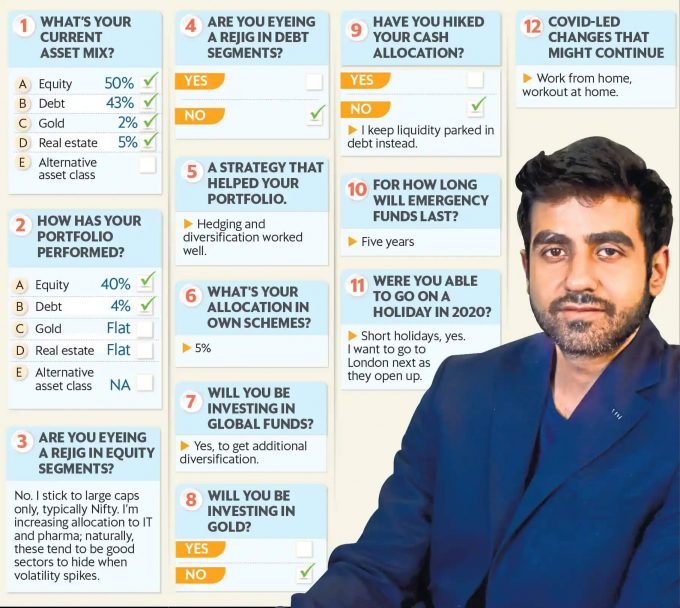
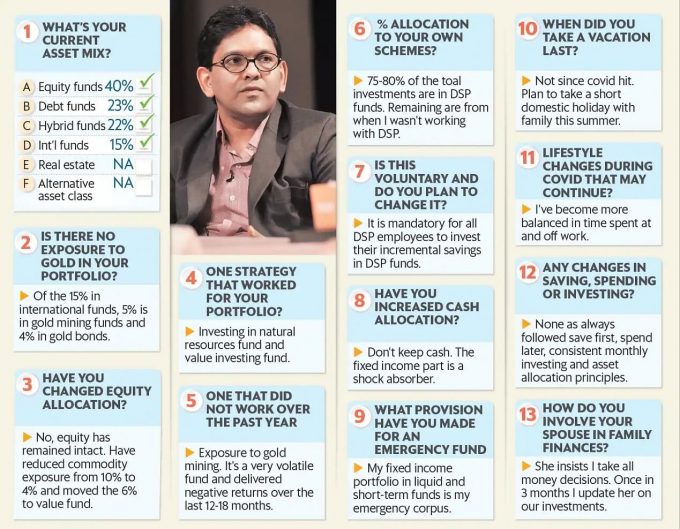
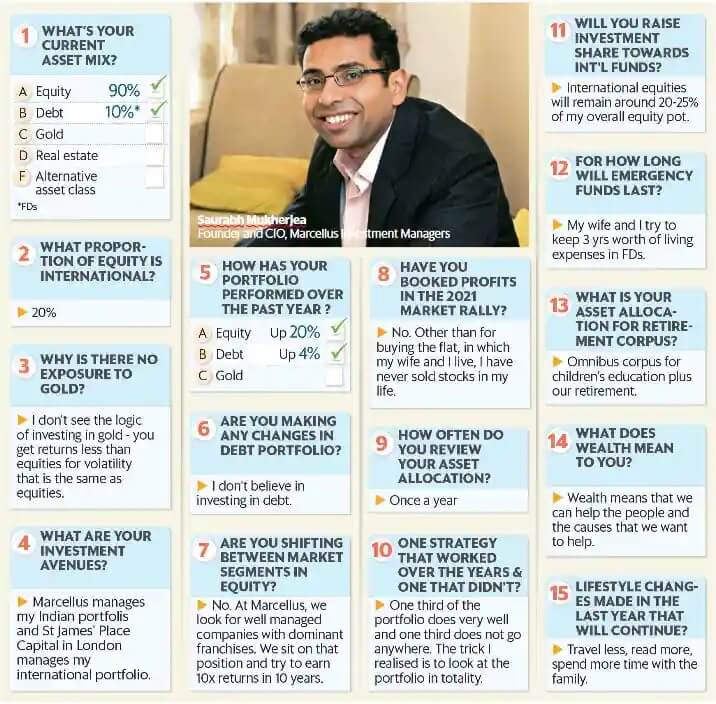
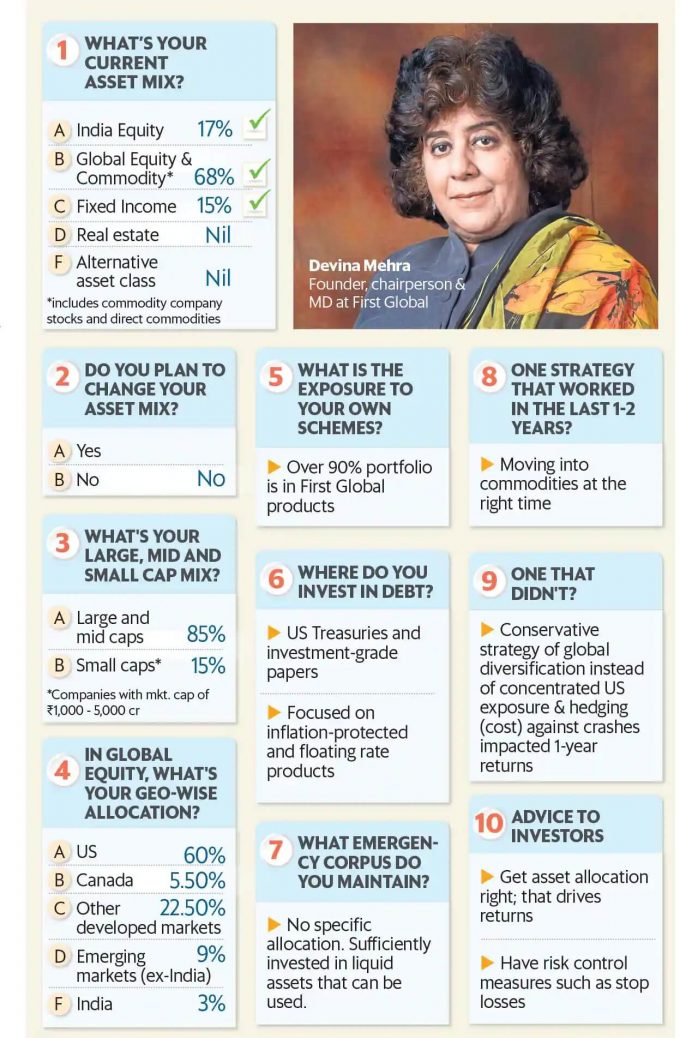
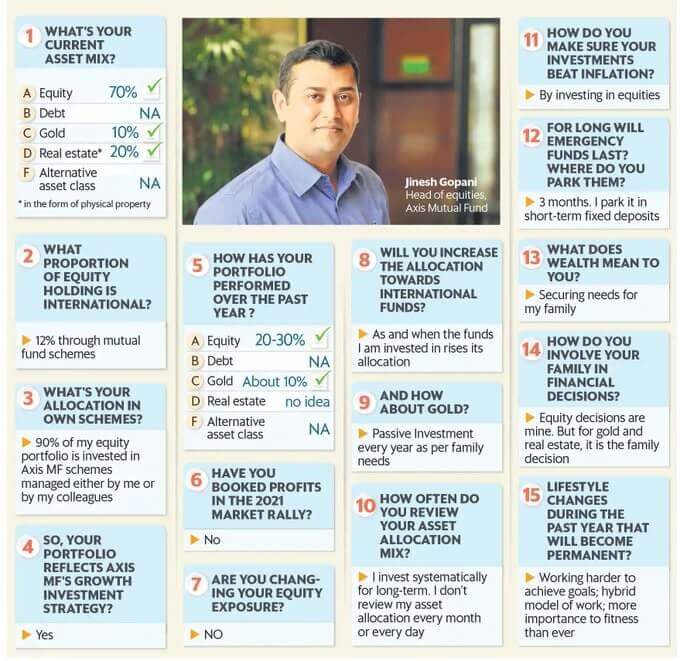

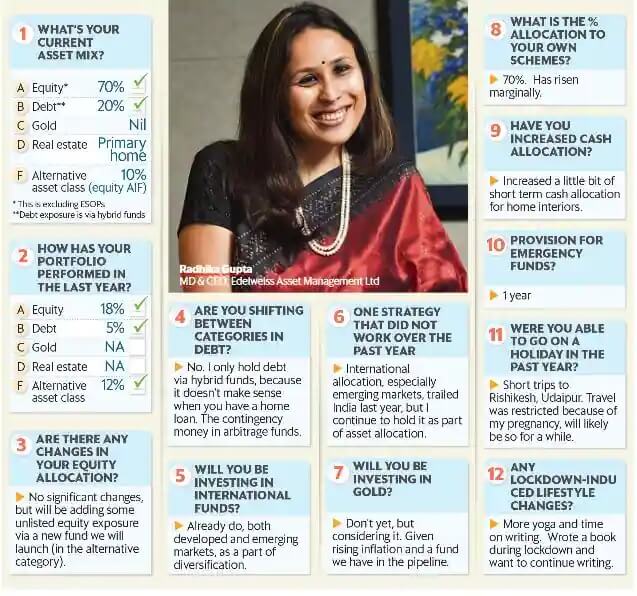
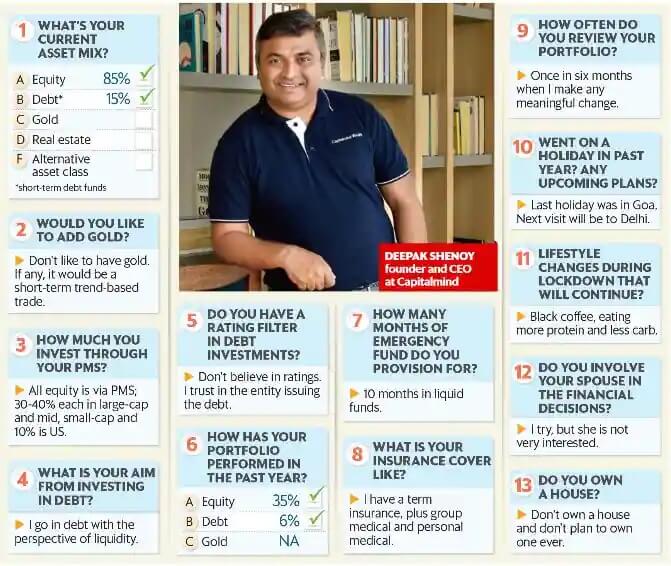




Hello,
Just to let you know that this content has been illegally copied at this location
https://huffingtonblogpost.in/nikhil-kamath-saurabh-mukherjea-radhika-gupta-more-2/
In case it’s showing up in Google search, you can request Google to remove the illegal content
https://support.google.com/legal/answer/3110420
Thanks
Thanks a lot.
We appreciate it.